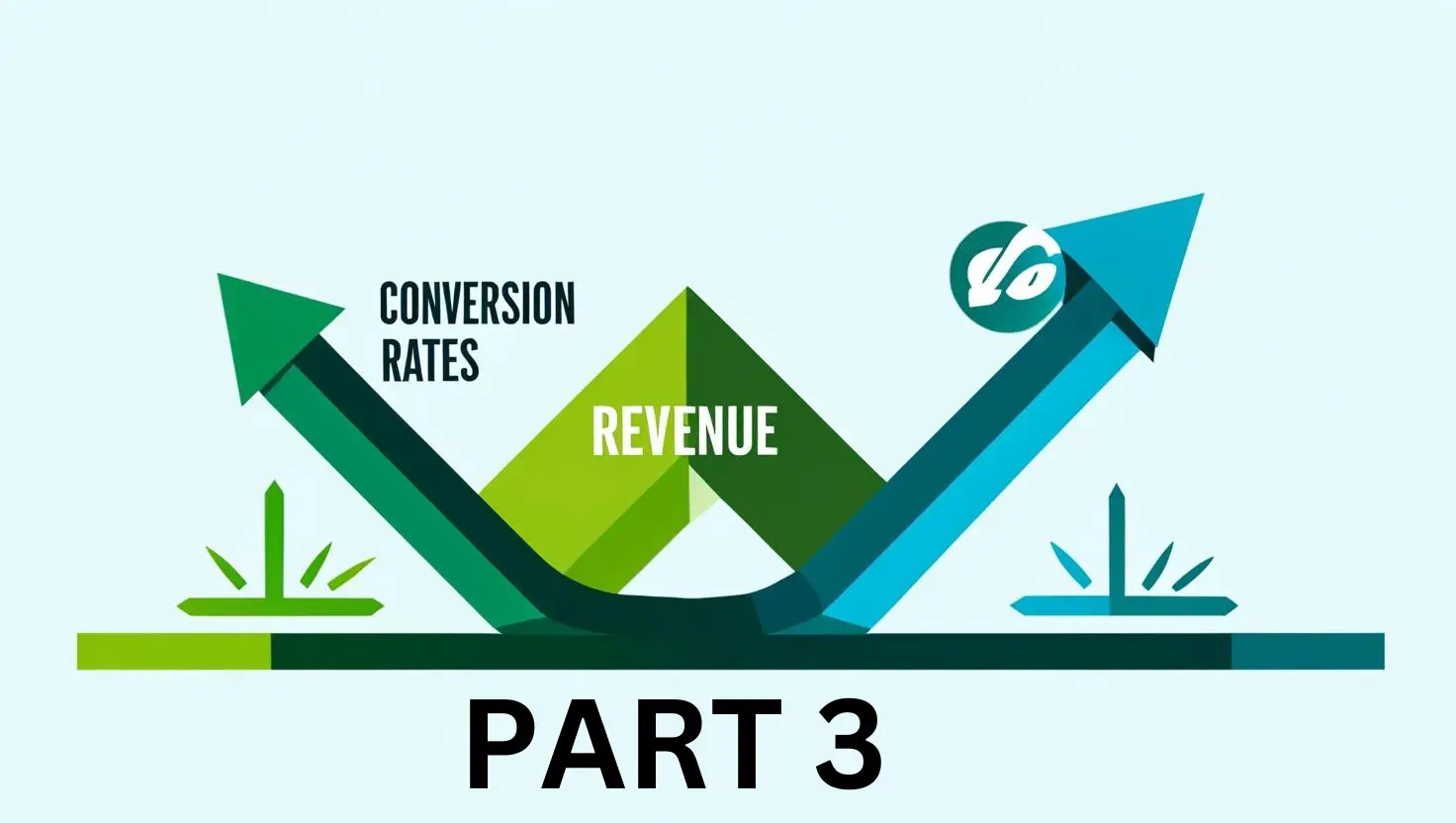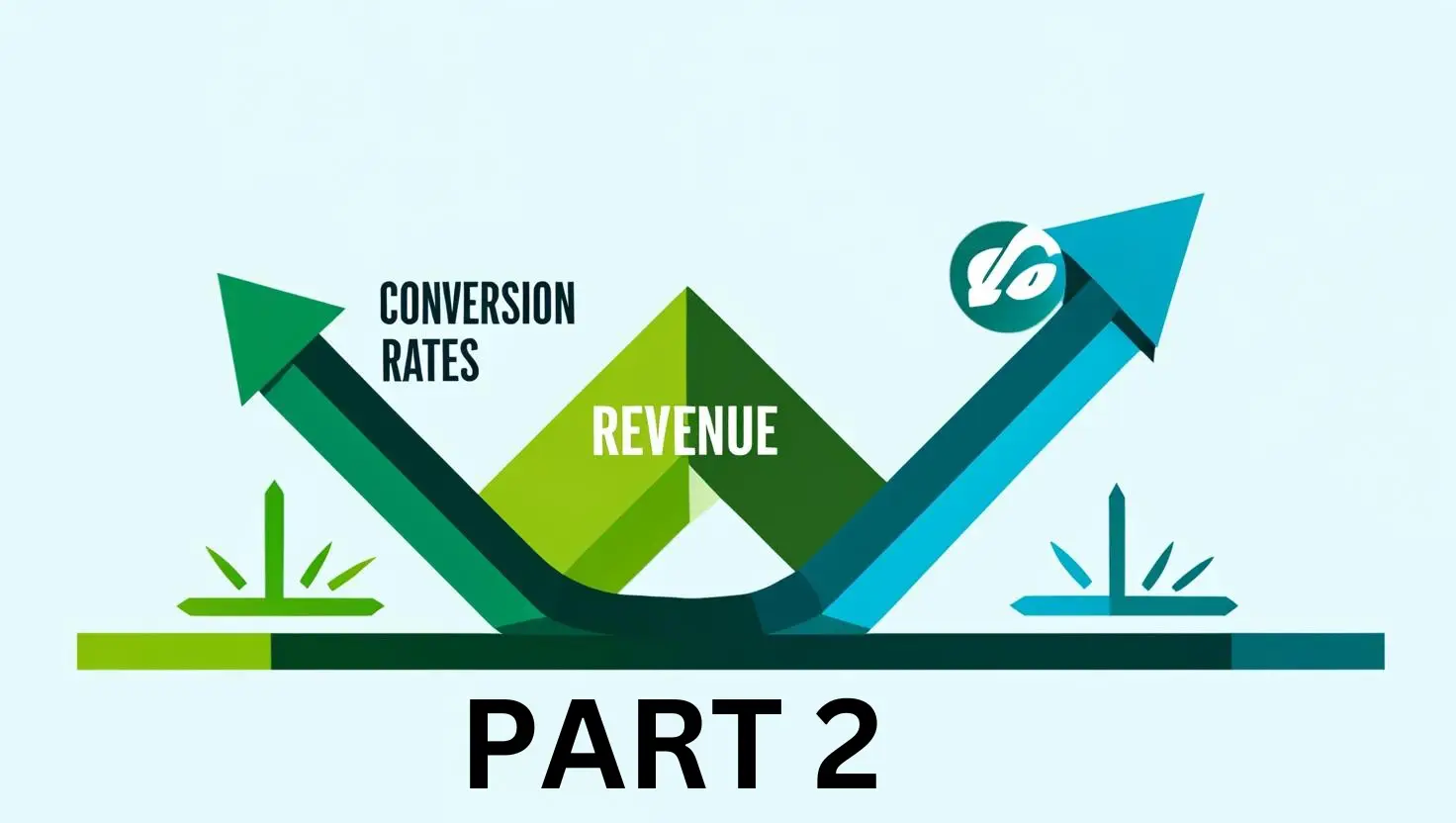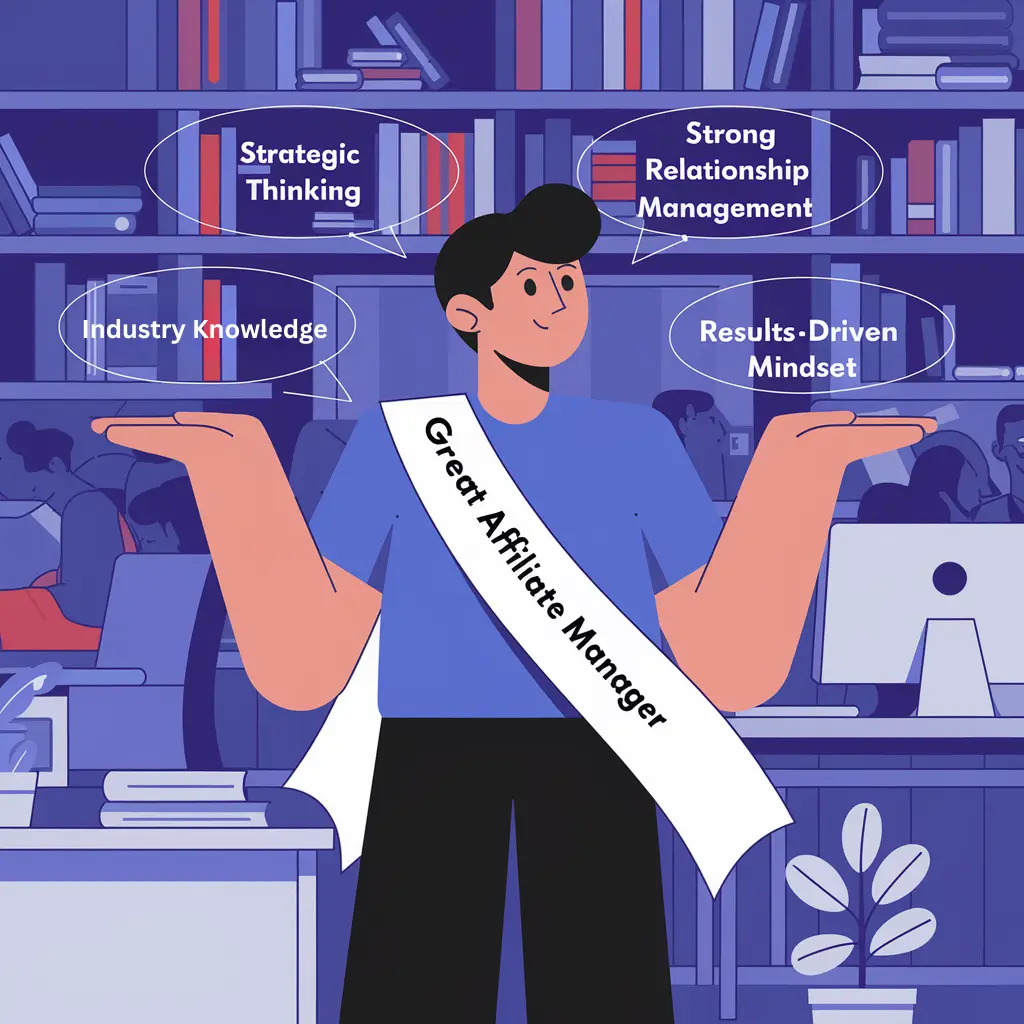Summary (TL;DR):
If your affiliate conversion rates remain low, your website may require optimization. Enhancing user experience, trust, and the checkout process are essential for driving conversions. A mobile-friendly design, fast load speeds, intuitive navigation, and clear CTAs improve accessibility and engagement. Trust is built with customer reviews, secure payment icons, and transparent policies, while a streamlined checkout process reduces friction. Leveraging retargeting, personalized recommendations, and SEO boosts customer retention and visibility. Continuous analysis using heatmaps, A/B testing, and analytics uncovers friction points. Finally, compelling incentives like free shipping and loyalty programs motivate purchases, maximizing ROI and marketing efficiency.
Key Takeaways:
- Ensure a mobile-friendly, fast-loading website with clear navigation and prominent CTAs.
- Use customer reviews, secure payment icons, and transparent policies to reassure buyers.
- Simplify forms, and offer guest checkout, multiple payment options, and progress indicators.
- Include high-quality images, detailed descriptions, and real-time stock information.
- Use abandoned cart reminders, tailored discounts, and personalized recommendations.
- Employ heatmaps, A/B testing, and analytics to identify and address friction points.
- Offer limited-time deals, free shipping, and loyalty programs to boost engagement.
- Optimize ad targeting and include social proof in campaigns to attract qualified leads.
If your affiliate conversion rate continues to lag – even after taking steps with affiliates, you might need to look at your own website to determine if there are issues that your brand needs to address. Basically, it's the old “it's not you, it's me” thing. Except you're not breaking up. Instead you're taking a hard look at your own business to be a better partner.
Understanding how tracking visitor interactions to refining your sales funnel, can provide a clear roadmap to turn more visitors into customers, ultimately leading to higher revenue and better ROI on your marketing efforts. Improving low conversion rates on your e-commerce website requires a comprehensive approach that enhances the user experience, builds trust, and streamlines the purchasing process. Here's how you can tackle this issue effectively:
Optimize Website Design and User Experience
- Mobile-Friendly Design: Ensure your website is fully responsive and performs seamlessly on mobile devices, as a majority of ecommerce traffic comes from mobile users.
- Page Load Speed: Slow-loading websites lose customers. Use tools like Google PageSpeed Insights to identify and fix performance issues.
- Clear Navigation: Simplify your site’s navigation to help visitors find products quickly. Use intuitive categories and filters.
- Simple CTAs: Use clear, actionable call-to-action buttons like “Buy Now” or “Add to Cart” that stand out visually.
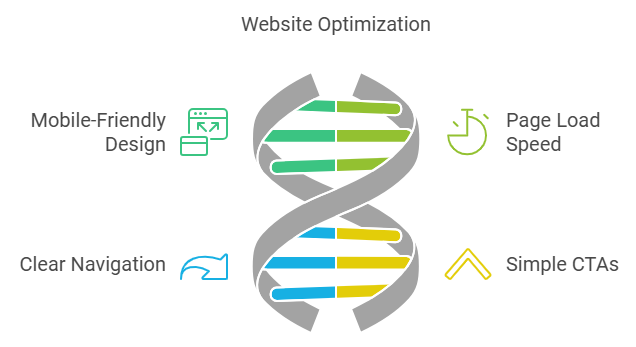
Build Trust with Customers
- Customer Reviews and Testimonials: Display authentic product reviews and testimonials prominently on your product pages.
- Trust Badges and Certifications: Include secure payment icons, SSL certificates, and guarantees like “Money Back” to reassure customers.
- Transparent Policies: Clearly outline your shipping, return, and refund policies to eliminate hesitation at checkout.
Streamline the Checkout Process
- Guest Checkout Option: Allow customers to complete purchases without creating an account.
- Simplify Forms: Reduce the number of fields required at checkout; only ask for essential information.
- Multiple Payment Options: Offer various payment methods, including credit cards, PayPal, and mobile wallets.
- Progress Indicators: Use checkout progress bars to let customers know how many steps are left.
Enhance Product Pages
- High-Quality Images: Use professional, high-resolution images with zoom capabilities and multiple angles.
- Detailed Descriptions: Write compelling and detailed product descriptions that highlight benefits, features, and specifications.
- Video Demonstrations: Add product demonstration videos to showcase functionality and use.
- Stock and Shipping Information: Display real-time stock levels and estimated delivery dates to create urgency and transparency.
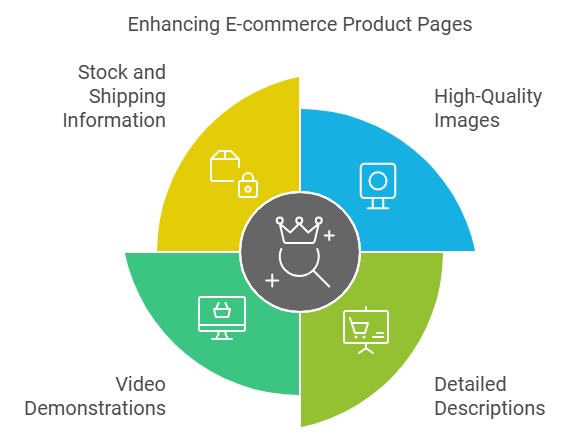
Leverage Retargeting and Personalization
- Retarget Abandoned Carts: Use email campaigns or retargeting ads to remind visitors of their unfinished purchases.
- Personalized Recommendations: Show personalized product recommendations based on browsing and purchase history.
- Dynamic Discounts: Offer tailored discounts or free shipping to customers who abandon their cart.
Improve Site Credibility and SEO
- User-Generated Content (UGC): Encourage customers to share photos or videos using your products.
- SEO Optimization: Ensure your product pages are optimized for search engines to attract qualified organic traffic.
- Social Proof: Highlight how many customers have purchased or are viewing a product in real-time.
Focus on Customer Support
- Live Chat: Offer real-time support through live chat to address customer queries instantly.
- FAQs: Include a comprehensive FAQ section to answer common customer questions.
- Post-Purchase Support: Provide tracking information and updates after purchase to build trust for future conversions.
Analyze and Test Continuously
- Heatmaps: Use tools like Hotjar or Crazy Egg to see where visitors are clicking and identify friction points.
- A/B Testing: Experiment with variations of landing pages, CTAs, and checkout flows to determine what works best.
- Analytics Tracking: Use Google Analytics to monitor bounce rates, exit rates, and conversion funnels for actionable insights.
Offer Compelling Incentives
- Limited-Time Offers: Create a sense of urgency with flash sales or countdown timers.
- Free Shipping: Offer free shipping for orders above a certain amount or as a limited-time promotion.
- Loyalty Programs: Incentivize repeat purchases with rewards or discounts for loyal customers.

Optimize for Targeted Traffic
Social Proof in Ads: Include customer testimonials or ratings in paid ad campaigns to build trust before visitors reach your site.
Ad Targeting: Ensure your ads reach the right audience based on demographics, interests, and shopping behavior.
